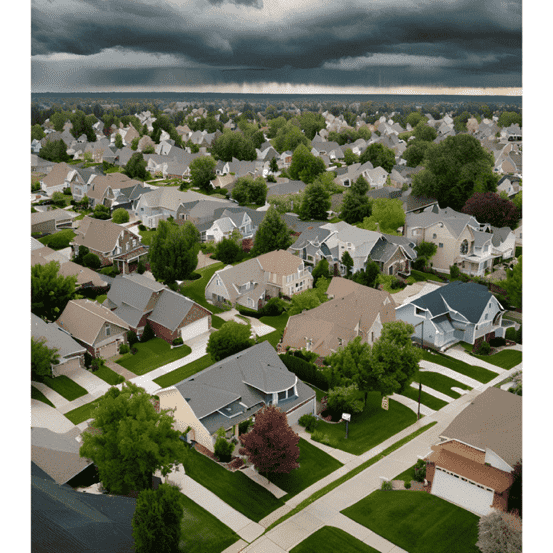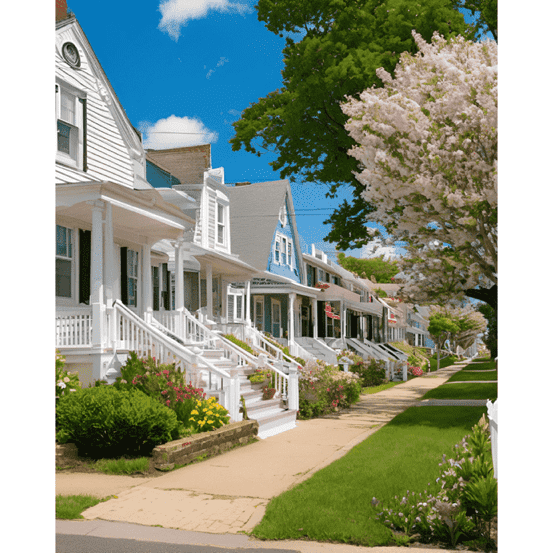Rhode Island’s Surprising Rise in U.S. Real Estate Trends
Explore how Rhode Island's first-time buyer market share surged 14.3% despite high median prices, reshaping U.S. real estate trends.
In the current U.S. real estate market, which is arguably one of the most challenging in recorded history, first-time buyers have managed to carve out a niche for themselves—albeit with varying degrees of success across different states. According to Freddie Mac’s latest market outlook report, the proportion of conventional conforming mortgages allocated to first-time buyers has seen a steady ascent over the past two decades, escalating from approximately 20% in 2004 to over 50% in the second quarter of this year. This remarkable trend can be attributed to several factors, including the demographic surge of millennials reaching the prime age for homeownership and the mortgage “lock-in” effect, which has inadvertently favored first-time buyers by constraining overall transaction volumes.
At the state level, Rhode Island has emerged as an unexpected leader in this domain, witnessing a staggering 14.3 percentage point increase in first-time buyer market share from 2019 to 2024. This phenomenon raises intriguing questions, particularly given that Rhode Island is not typically recognized for its affordability. As of September, the median listing price in the state stood at $569,950—significantly higher than the national median of $425,000, as reported by Realtor.com®.
One might speculate that Rhode Island's compact size and relatively low transaction volume amplify the visibility of first-time buyers, who have made gains in nearly every state. Last month, the state recorded a mere 1,465 active listings—the lowest in the nation. Other states experiencing notable increases in first-time buyer share include Iowa (12.4%), Nebraska (11.3%), Wisconsin (10.9%), and Connecticut (10.8%). Generally, states in the Northeast and Midwest have exhibited the most substantial gains for first-time buyers.
Freddie Mac's economists have observed that the first-time homebuyer share is expanding more rapidly in regions characterized by moderate or sluggish home-sale activity. In these areas, the diminished number of overall transactions allows first-time buyers to constitute a larger proportion of the total market. Conversely, states that serve as popular retirement havens, such as Arizona and Florida, have seen a slower growth in first-time buyer share, likely due to an influx of older Americans whose home purchases dilute the market share for first-time buyers.
Over the past five years, first-time buyers have experienced a decline in market share in only two states: Louisiana (-0.2%) and North Dakota (-1.5%). It is essential to note that Freddie Mac's analysis focuses solely on first-time buyer share of conventional mortgages, excluding cash sales and unconventional home loans. When these transactions are factored in, the first-time buyer share of home sales appears significantly lower than the 53% reported by Freddie Mac. According to the National Association of Realtors®, first-time buyers accounted for 26% of all sales of previously owned homes last month, a slight decrease from 27% a year prior, matching historical lows recorded in August 2024 and November 2021. Notably, all-cash sales constituted 30% of transactions in September, up from 26% in August and 29% a year earlier, reflecting a growing trend among investors and homeowners leveraging their equity to acquire smaller or more affordable properties.
Freddie Mac's recent report underscores the myriad challenges prospective first-time buyers face in their quest for homeownership. Between January 2000 and July 2024, cumulative entry-level prices surged by 63% more than high-end home prices, indicating that starter-home prices are escalating at a pace that outstrips the broader market. This supply shortage can be traced back to the Great Recession, which severely impacted new-home construction. Although construction has gradually increased since then, it has failed to keep pace with demand, resulting in a deficit of at least 1.5 million homes—a stark reminder of the complexities and hurdles that continue to define the U.S. real estate landscape.
Rhode Island’s Surprising Rise in U.S. Real Estate Trends
Greece: Europe’s Fourth Cheapest Real Estate Market
Greece: Europe’s Fourth Cheapest Real Estate Market
Explore why Greece stands out as one of Europe’s most economical real estate markets, attracting savvy investors seeking value and opportunity.

Surge in Scottish Home Sales: UK Real Estate Update
Surge in Scottish Home Sales: UK Real Estate Update
Scottish home sales and enquiries surged in October, with a third of surveyors reporting the fastest growth in years, signaling a vibrant market.

Spain: A Leading Market in European Real Estate
Spain: A Leading Market in European Real Estate
Explore how Spain is becoming one of Europe's most promising real estate markets, excelling in retail, logistics, and hotel sectors for strategic growth.

Greece Real Estate Market: Rise of Serviced Apartments
Greece Real Estate Market: Rise of Serviced Apartments
Explore the growing demand for serviced apartments in central Athens, where integrated hospitality services attract savvy investors in the Greece real estate market.

Home Prices Hit by Climate Change, J.P. Morgan Warns
Home Prices Hit by Climate Change, J.P. Morgan Warns
J.P. Morgan analysts reveal a negative link between climate risk and home price appreciation. Explore the emerging trends and their impact.


